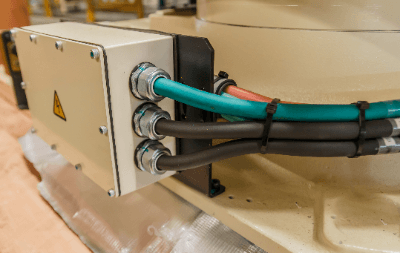What Is a Cable Gland?

Cable glands, essential in electrical systems, are devices used to insert and securely fasten electrical cables into control panels and operation panel enclosures and equipment.
The main functions of a cable gland are as follows:
External environmental protection: Prevents dust, dirt, and moisture from entering through openings in enclosures such as control panels.
Retention: Securely holds cables in place and prevents them from loosening under external mechanical tension or vibration.
Sealing: Prevents dust and water from entering the cable from the outside.
JIS F8801 “Marine Wire Penetration Hardware” is the standard for cable glands.
Uses of Cable Glands
Cable glands, vital for ensuring safe and secure cable connections, are used to penetrate enclosure walls by attaching to cable intakes in devices like control panels. They are crucial in both indoor and outdoor wiring setups of electrical and control equipment.
These glands protect against dust and water ingress in control and operation panel enclosures, mitigate disconnection risks from vibrations or pulling, and ensure secure cable fastening and management.
Available in various materials like stainless steel and polyamide resin (PA), selecting a cable gland suitable for specific environments—such as outdoor, oily, or high-temperature conditions—is critical for optimal performance.
Alongside cable glands, cable clamps are also used for introducing cables into enclosures. While cable glands are typically employed for single cable entries, a ground clamp is more suited for multiple cable installations.